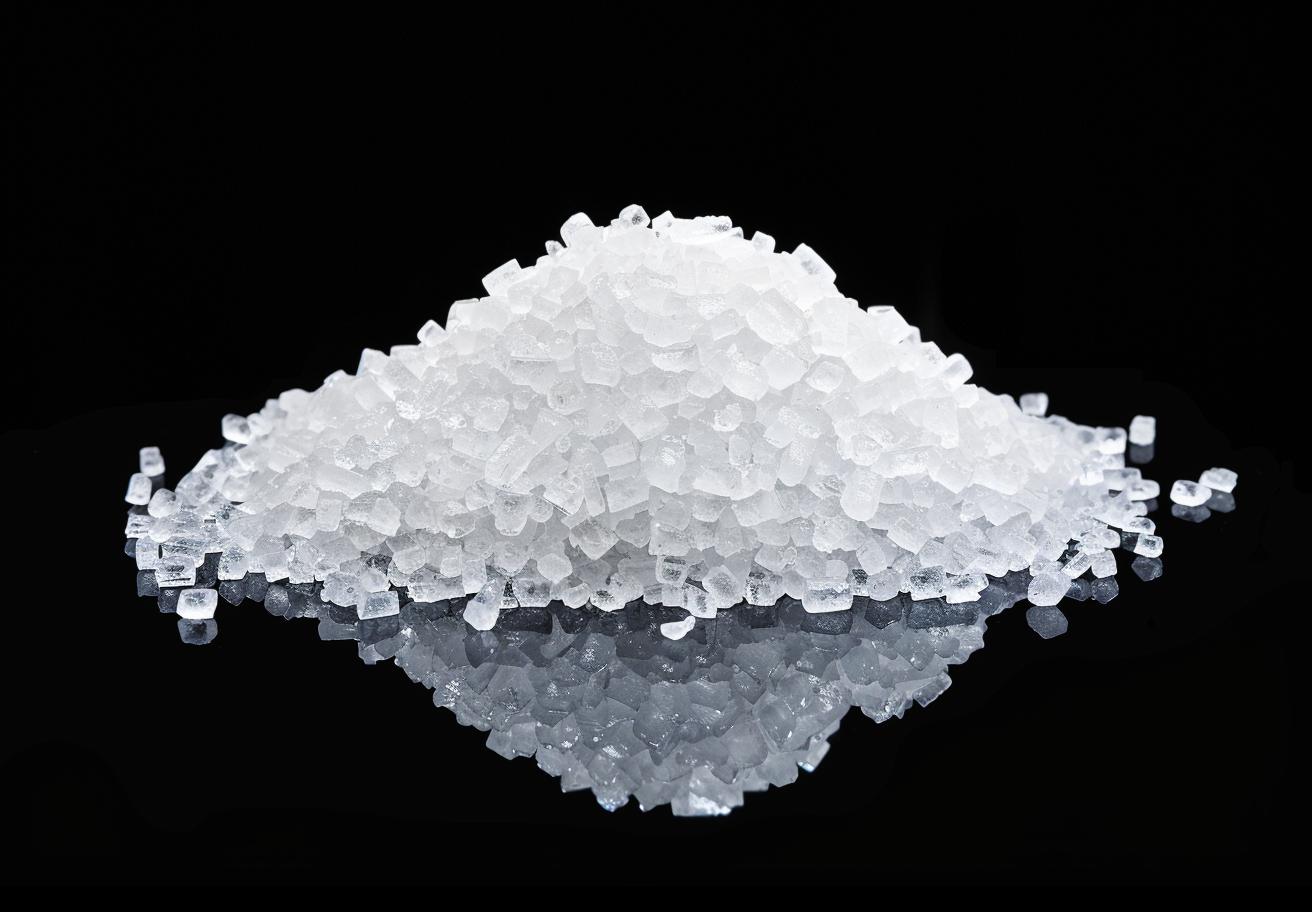1. Introduction to Rare Earth Nitrates
Rare earth nitrates are chemical compounds derived from rare earth elements, which include a group of 17 elements in the periodic table (15 lanthanides, plus scandium and yttrium). These elements are widely regarded for their unique chemical and physical properties, such as high magnetism, luminescence, and catalytic activity, making them critical for modern technology and industrial applications. When combined with nitric acid, these elements form rare earth nitrates, which are highly soluble in water and widely used in various high-tech industries.
The rare earth nitrate market has grown significantly due to the increasing demand for rare earth elements in applications like electronics, green energy technologies, automotive manufacturing, medical devices, and more. For example, rare earth nitrates are essential for making permanent magnets in electric vehicles (EVs), catalysts in the automotive industry, phosphors in lighting, and specialty glasses used in optics. As technological advancements continue, the need for rare earth nitrates will only increase, positioning them as vital components in next-generation innovations.
2. Classification of Rare Earth Nitrates
Rare earth nitrates are critical components in various advanced technologies, and they are classified based on their position in the lanthanide series and their chemical behavior. Each rare earth element has distinct properties contributing to its specific industrial applications. Below is a detailed breakdown of each category, along with the key nitrates within that category:

Light Rare Earth Nitrates
Light rare earth elements typically have atomic numbers from 57 (Lanthanum) to 63 (Europium). These elements are more abundant and generally have a broader range of industrial applications.
-
Lanthanum Nitrate (La(NO₃)₃)
- Chemical Properties: Lanthanum nitrate is a water-soluble salt, highly reactive and hygroscopic. It forms colorless solutions in water.
- Applications: Lanthanum nitrate is primarily used to produce catalysts for petroleum refining and automotive catalytic converters. It's also crucial in optical glass manufacturing, especially for enhancing the refractive index of glass, and in hydrogen storage alloys. Lanthanum nitrate is also employed in ceramic manufacturing to improve the quality of ceramics and glass.
- Industrial Significance: In the energy sector, lanthanum nitrate plays a role in hydrogen storage systems, contributing to more efficient fuel cells and energy storage devices.
-
Cerium Nitrate (Ce(NO₃)₃)
- Chemical Properties: Cerium nitrate is a pale yellow, water-soluble compound. It can easily absorb moisture from the air and decompose into Cerium oxide at high temperatures.
- Applications: Cerium nitrate is widely used as an oxidizing agent in industrial applications, particularly in catalysis for auto emissions control. It is also used in glass polishing, where it is applied as a polishing powder to remove scratches from glass surfaces. In the photovoltaic industry, cerium nitrate is used in the production of solar panels, which helps in cleaning and improving the efficiency of solar cells.
- Industrial Significance: The largest use of cerium nitrate is in catalytic converters for automotive engines. As a catalyst, it helps convert harmful carbon monoxide and nitrogen oxides into less harmful emissions.
-
Neodymium Nitrate (Nd(NO₃)₃)
- Chemical Properties: Neodymium nitrate is a highly soluble, purple-red crystalline compound that readily dissolves in water. It is also hygroscopic, meaning it can absorb water from the air.
- Applications: Neodymium nitrate is used in the production of high-performance magnets for electric motors, speakers, and hard drives. It also finds use in laser systems as a dopant, particularly in neodymium-doped lasers used in cutting and medical applications. Another important use is in catalysis, particularly in petroleum refining and in the production of hydrogen fuel.
- Industrial Significance: Neodymium magnets are some of the most powerful permanent magnets known, making neodymium nitrate essential for the manufacturing of motors, wind turbines, and magnetic resonance imaging (MRI) machines.
-
Praseodymium Nitrate (Pr(NO₃)₃)
- Chemical Properties: Praseodymium nitrate is a yellow, water-soluble compound, and it is less common compared to some other rare earth nitrates.
- Applications: Praseodymium nitrate is used in alloys to enhance their strength and heat resistance, especially in the aerospace industry. It is also an important component in the manufacturing of permanent magnets, and it is used in ceramic pigments for making green glass and porcelain.
- Industrial Significance: Praseodymium is used in metal alloys that are crucial for high-temperature applications, such as turbine blades and other parts in jet engines.
-
Europium Nitrate (Eu(NO₃)₃)
- Chemical Properties: White, water-soluble, luminescent in certain forms.
- Applications: Europium nitrate is essential in the production of phosphors used in color displays and energy-efficient lighting.
- Industrial Significance: Key in LED lights and television displays, contributing to improved luminescence efficiency.
Mid Rare Earth Nitrates
Mid-rare earth elements are those with atomic numbers 64 to 75, including elements such as Gadolinium, Terbium, and Dysprosium. These elements are rarer and are typically used in more specialized applications.
-
Gadolinium Nitrate (Gd(NO₃)₃)
- Chemical Properties: Gadolinium nitrate is a white, water-soluble crystalline compound. It is highly stable and less hygroscopic than other rare earth nitrates.
- Applications: Gadolinium nitrate is primarily used in medical imaging, specifically in the formulation of contrast agents for MRI (Magnetic Resonance Imaging). It is also employed in nuclear reactors as a neutron absorber in control rods and as a phosphor material in X-ray screens.
- Industrial Significance: Gadolinium's use in medical diagnostics (MRI) makes it one of the most important elements in modern medical imaging technology, helping to diagnose a variety of conditions, including cancers and neurological disorders.
-
Terbium Nitrate (Tb(NO₃)₃)
- Chemical Properties: Terbium nitrate is a pale green, water-soluble compound that is sensitive to light and air.
- Applications: Terbium nitrate is used in phosphors for fluorescent lighting, especially in the production of energy-efficient LEDs. It is also important in solid-state devices, including electronic displays and lasers. Terbium compounds are also used as dopants in fiber-optic communication systems.
- Industrial Significance: The use of terbium in lighting technologies is central to the development of green lighting, reducing energy consumption in commercial and residential settings.
-
Dysprosium Nitrate (Dy(NO₃)₃)
- Chemical Properties: Dysprosium nitrate is a yellowish, highly soluble compound. It is known for its high magnetic susceptibility.
- Applications: Dysprosium nitrate is used in the production of high-performance magnets (especially in permanent magnets for electric vehicles (EVs) and wind turbines). It also finds use in lasers and neutron capture materials for nuclear reactors.
- Industrial Significance: Dysprosium is critical in green technologies, such as wind energy and electric vehicles, where its role in magnets is essential for enhancing the performance and energy efficiency of motors.
-
Holmium Nitrate (Ho(NO₃)₃)
- Chemical Properties: Holmium nitrate is a bright yellow, water-soluble compound. It is highly stable and exhibits strong magnetic properties.
- Applications: Holmium nitrate is primarily used in the manufacture of high-strength magnets and laser applications such as medical lasers and fiber optic communications.
- Industrial Significance: Holmium-based magnets are key to the development of magnetic refrigeration systems, which are seen as an environmentally friendly alternative to traditional cooling systems.
Heavy Rare Earth Nitrates
Heavy rare earth elements are those with atomic numbers 76 and higher, including elements such as Thulium, Ytterbium, and Lutetium. These are the rarest and most expensive of the rare earth elements.
-
Thulium Nitrate (Tm(NO₃)₃)
- Chemical Properties: Thulium nitrate is a pale blue, water-soluble compound. It is one of the less commonly used heavy rare earth nitrates but is highly valued in specialized applications.
- Applications: Thulium nitrate is primarily used in medical lasers for surgical and dental applications. It is also used in X-ray machines and other diagnostic equipment.
- Industrial Significance: Thulium is one of the most important materials for medical laser systems, which are used in a variety of therapeutic procedures, including laser surgery and cancer treatments.
-
Ytterbium Nitrate (Yb(NO₃)₃)
- Chemical Properties: Ytterbium nitrate is a colorless, water-soluble compound that is stable and non-hygroscopic.
- Applications: Ytterbium nitrate is used in fiber optics, laser technology, and as a dopant in stainless steel alloys to improve strength and corrosion resistance. It is also used in the production of energy-efficient lighting.
- Industrial Significance: Ytterbium’s use in fiber optics and laser systems plays a key role in the communications industry, while its application in stainless steel enhances material performance in a variety of industries.
-
Lutetium Nitrate (Lu(NO₃)₃)
- Chemical Properties: Lutetium nitrate is a colorless, water-soluble compound that is stable under normal conditions.
- Applications: Lutetium nitrate is used in medical imaging, phosphor materials, and scintillation detectors. It is also used in nuclear medicine
3. Applications of Rare Earth Nitrates
Rare earth nitrates play a critical role across many high-tech industries, driving innovation in everything from clean energy to consumer electronics. Below are some of the key applications for which these compounds are indispensable:
Catalysis and Automotive Industry
One of the largest uses of rare earth nitrates is in catalysis. Rare earth nitrates are widely used in automotive catalytic converters to reduce harmful emissions from vehicles. Lanthanum nitrate, cerium nitrate, and neodymium nitrate are particularly important in this field. These compounds serve as excellent catalysts due to their ability to speed up chemical reactions, making them ideal for reducing carbon monoxide, nitrogen oxides, and hydrocarbons in vehicle exhaust.
Magnetic Materials and Electric Vehicles (EVs)
Rare earth nitrates are integral to the production of high-performance magnets, which are crucial for applications in electric vehicles (EVs), wind turbines, and electronics. Neodymium nitrate, dysprosium nitrate, and terbium nitrate are commonly used to produce powerful neodymium-iron-boron (NdFeB) magnets, which are key components in the electric motors of EVs and in renewable energy systems.
Lighting and Display Technology
Rare earth nitrates, particularly cerium nitrate and europium nitrate, are used in the manufacture of phosphors that are essential for the production of energy-efficient LEDs and fluorescent lighting. Europium nitrate is particularly important for the creation of red phosphors used in color television screens, computer monitors, and LED displays.

Medical and Imaging Technologies
In the medical field, rare earth nitrates, such as gadolinium nitrate, are used in MRI (Magnetic Resonance Imaging) contrast agents. Gadolinium compounds improve the quality of imaging, allowing doctors to detect abnormalities more effectively. Holmium nitrate is another compound used in laser treatments, especially in surgical procedures and diagnostics, thanks to its ability to generate strong light at specific wavelengths.
Glass Manufacturing and Optics
Rare earth nitrates like lanthanum nitrate and cerium nitrate are used in the production of specialty glass for high-end optical and photographic applications. Lanthanum nitrate is especially valuable in improving the refractive index of glass, which is vital for lenses, mirrors, and fiber optic cables. Additionally, cerium nitrate is used in glass polishing, especially for cleaning and removing scratches from high-precision lenses.
Hydrogen Storage and Clean Energy
Rare earth elements, particularly lanthanum nitrate, play a crucial role in the development of hydrogen storage systems. Lanthanum is part of an alloy that absorbs hydrogen, making it a critical material for fuel cells and other clean energy applications. As the demand for renewable energy technologies grows, the role of rare earth nitrates in energy storage systems becomes increasingly important.

4. Benefits of Rare Earth Nitrates
The use of rare earth nitrates offers several advantages across different industrial sectors. These compounds are highly valued for their unique properties, which contribute to their widespread use in applications ranging from energy production to advanced materials science.
High Purity and Stability
One of the key benefits of rare earth nitrates is their high purity. This makes them ideal for use in sensitive applications, such as medical imaging and high-precision manufacturing. Their stability in various environments ensures reliable performance in demanding industries, including aerospace and electronics.
Catalytic Efficiency
The ability of rare earth nitrates to serve as effective catalysts is another major advantage. Their unique electron configurations allow them to accelerate chemical reactions with high efficiency, making them essential for industries focused on reducing emissions, such as the automotive sector.
Energy Efficiency and Sustainability
As the world moves toward more sustainable energy solutions, rare earth nitrates play a critical role in the development of clean energy technologies. Their use in fuel cells, hydrogen storage, and renewable energy systems contributes directly to improving energy efficiency and reducing the carbon footprint of industries like transportation and power generation.
Enhanced Material Properties
Rare earth nitrates are used to enhance the properties of materials such as ceramics, alloys, and glasses. These enhanced properties, such as improved strength, corrosion resistance, and optical clarity, make rare earth nitrates indispensable in the aerospace, electronics, and construction industries.
5. Why Choose Our Rare Earth Nitrate Products?
At Stanford Materials Corporation (SMC), we pride ourselves on providing high-quality rare earth nitrate products that meet the most stringent industry standards. Our products are manufactured using the latest technology and undergo rigorous quality control processes to ensure they meet the needs of various high-tech industries.

Why Choose Us?
- Superior Quality: Our rare earth nitrates are sourced from reputable suppliers and are produced with the highest purity to ensure optimal performance in your applications.
- Tailored Solutions: We offer custom formulations and packaging options to meet the unique requirements of your industry.
- Expert Support: Our knowledgeable team is always ready to assist you with technical specifications, product recommendations, and industry insights.
- Sustainability: We are committed to providing sustainable solutions that contribute to the advancement of clean energy and environmental protection.
6. Conclusion
Rare earth nitrates are indispensable in numerous industries, powering the technological innovations that shape our modern world. From clean energy solutions to advanced manufacturing processes, these compounds play a vital role in improving efficiency, performance, and sustainability across various sectors. With our high-quality products and commitment to innovation, Stanford Materials Corporation (SCM) is your trusted partner for rare earth nitrate solutions that meet the evolving needs of your industry. Contact us today to learn more about our products and how we can support your business.



